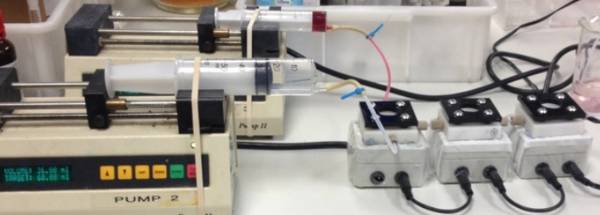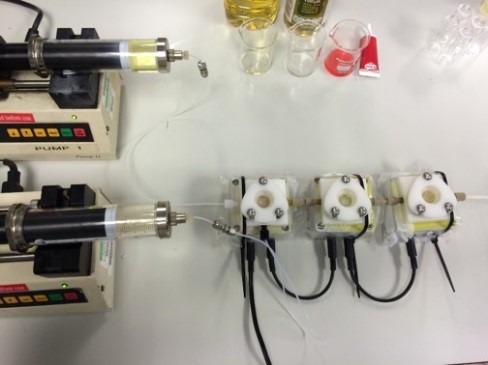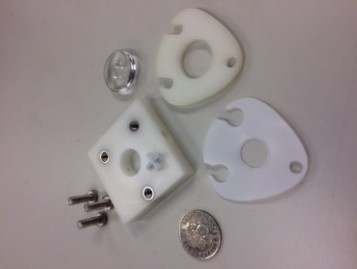Introducing the Freactors
First post about our mini CSTRs and I thought I’d put a post about some aspects of the design.
These are our first generation mini CSTRs – we call them Freactors. They have 2 ml well drilled into polyacetal plastic with two holes drilled opposite to each other to allow the flow of material from one into the next. The diameter of the well is sufficient to hold a magnetic stirrer so we’re going to try some different shapes and sizes and see which is best. On top of this are a glass bead and a PTFE seal and finally a plastic top with 4 holes drilled to hold everything into place. The CSTRs are connected by 1/8” HPLC connectors and 1/8” PTFE tubing and ferrules. Each one comes with a mini magnetic stirrer made using a fan with a magnet attached which can be connected in series.

Whilst these worked fine we found they often tended to leak and didn’t have great compatibility with organic solvents – kind of a problem in an organic chemistry lab! We also found out that chemist’s aren’t so good at tightening evenly and we broke quite a few of the tops whilst trying to get them leak free….so the chemical engineering team went back to the drawing board and came back with the Freactors mark 2:

These had three screws to hold the top in place and only one which required fastening with the others able to slot on and off to keep them in place. We also changed the plastic on the top to a more chemical resistant PTFE. This time we made them with holes in each side and HPLC plugs were used to block off any ports that were not required. This meant we had complete flexibility around the reactor set-up with the ability to introduce multiple feeds at various points along the set-up.
We designed these to be as simple and flexible as possible and also to be open-source so let us know if you want to find out more or give them a try out – we’d love to know how people are using them. Please share you stories both of successes and failures so we can continue to improve them and work on making an even more flexible design in the future!

